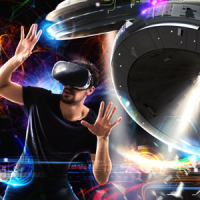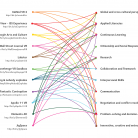
Virtual reality, augmented reality and enhanced realities: an overview General Resource - Review and consider possibilities
Last updated on 30/11/2019
-
You must be signed in to access this function
0
Description
Virtual, augmented, and enhanced realities are set to explode in the education space. This will bring with it many opportunities around how we teach and learn.
Overview
VR is often used as an umbrella term for all immersive experiences, including Virtual Reality (VR), Augmented Reality (AR) and 360 Video. There are important differences between these technologies, so let's dive a little deeper into each:
Virtual Reality
Virtual reality uses simulated environments that not only places the user inside the experience, but allows them to interact with it.
Augmented Reality
AR is a view of the physical real world environment whose elements are supplemented by sensory input such as sound, video or graphics. Augmented reality is basically viewing the real world with overlaid information layer.
360 Video / Images
360 videos are recordings where a view in every direction is recorded at the same time, shot using an multidirectional camera or a collection of cameras.
Scenes may real-world or simulated, and the viewer controls the viewing direction during playback.
Considerations
Accessibility of Virtual Reality
Accessibility of Virtual Reality should be considered prior to implementation in any teaching or learning context. This guide from University of Melbourne provides an overview.
Implement
Virtually Inspired Showcase
Check out this great showcase of how other universities are employing emerging technologies, hosted by Drexel University (Online).
Immersive Learning in Practice
Here are some useful examples of VR resources, including the skills and attributes thate each one develops:
|
Keep talking and Nobody Explodes
|
|
|
|
|
|
|
Support Resources
-
AR, VR, and Enhanced Realities: Seven perspectives on the potential and risks for learning
eBook
-
Using enhanced realities for learning: Are you ready?
White Paper
-
VR? AR? MR? Sorry, I’m confused.
Since the beginning of time, most new and emerging technology has nurtured an unhealthy attachment to acronyms, and virtual reality is no different.
Contributed by
-
Learning Futures
Brad Harrison
Licence
© 2024 Griffith University.
The Griffith material on this web page is licensed under a Creative Commons Attribution NonCommercial International License (CC BY-NC 4.0). This licence does not extend to any underlying software, nor any non-Griffith images used under permission or commercial licence (as indicated). Materials linked to from this web page are subject to separate copyright conditions.
Preferred Citation
(2019). Virtual reality, augmented reality and enhanced realities: an overview. Retrieved from https://app.secure.griffith.edu.au/exlnt/entry/6665/view


